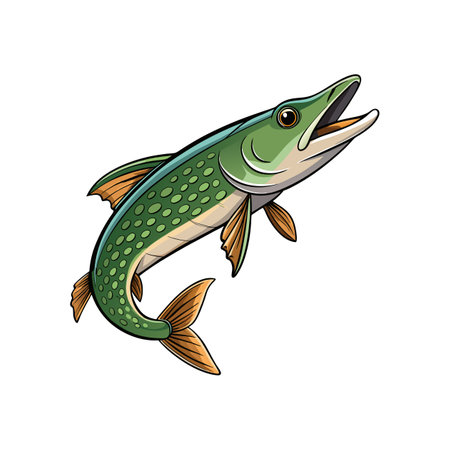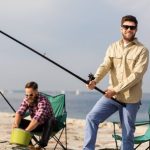1. Understanding Fishing Quotas in the U.S.
Fishing quotas are a key part of how the United States manages its ocean resources. These quotas help make sure fish populations stay healthy and that people can continue fishing for years to come. Whether youre a commercial fisherman or someone who enjoys casting a line on the weekend, fishing quotas affect everyone who depends on the sea.
What Are Fishing Quotas?
A fishing quota is a legal limit on how much of a certain type of fish can be caught. These limits are usually set each year and are based on scientific data about fish populations. The goal is to prevent overfishing while still allowing people to fish responsibly.
Why Do We Need Quotas?
The oceans might seem endless, but fish populations can shrink fast if we take too many. Fishing quotas help:
- Protect species from being overfished
- Support long-term sustainability
- Balance the needs of commercial and recreational fishing communities
- Ensure fair access for future generations
How Are Quotas Set?
Fishing quotas in U.S. waters are managed through a legal framework established by the Magnuson-Stevens Fishery Conservation and Management Act. This federal law gives authority to regional fishery management councils, which use scientific advice to decide how much of each species can be caught.
Key Players Involved in Setting Quotas:
| Organization | Role |
|---|---|
| NOAA Fisheries | Provides science-based recommendations and oversees implementation |
| Regional Fishery Management Councils | Create specific plans for different regions based on local data |
| Scientific and Statistical Committees (SSC) | Offer expert input on stock assessments and sustainable catch levels |
Sustainable Practices Supported by Quotas
The use of quotas encourages sustainable fishing practices by limiting catches to levels that fish populations can handle. This includes:
- Total Allowable Catch (TAC): The maximum amount of a species allowed to be harvested each year
- Catch Shares: A system where individual fishermen or groups are given a share of the total quota, promoting accountability
- Bycatch Limits: Restrictions on the amount of unintended species that can be caught and discarded
The Balance Between Access and Conservation
The U.S. quota system is designed to strike a balance between letting people fish and protecting marine ecosystems. While some may see quotas as restrictions, they actually serve as guardrails that keep our fisheries productive and available for both commercial industries and recreational anglers alike.
In Short:
If you’re fishing off American coasts—whether from a boat or the shore—you’re part of a carefully managed system built to protect marine life for today and tomorrow. Understanding how quotas work helps all of us become better stewards of our oceans.
2. The Legal Foundations of Commercial Fishing
Commercial fishing in the United States is heavily regulated to protect fish populations, support sustainable practices, and balance economic interests. These regulations are shaped by both federal and state laws, with oversight from various agencies. Here’s a breakdown of how it all works.
Federal Oversight: NOAA and Fishery Management Councils
The primary federal agency responsible for managing commercial fishing is the National Oceanic and Atmospheric Administration (NOAA), specifically through its division called the National Marine Fisheries Service (NMFS). NOAA works hand-in-hand with eight Regional Fishery Management Councils across the U.S. to oversee fisheries in federal waters, which extend from 3 to 200 nautical miles offshore.
Main Responsibilities of NOAA and Regional Councils
| Agency/Entity | Key Responsibilities |
|---|---|
| NOAA/NMFS | Enforces national fishery laws, conducts scientific research, manages data collection, and approves fishery management plans. |
| Regional Fishery Management Councils | Develop fishery management plans tailored to local ecosystems and commercial needs; set quotas and season rules based on science. |
Licensing Requirements for Commercial Fishing
To legally fish commercially, businesses must obtain the proper licenses. These can vary depending on the type of species targeted and where the fishing takes place (state vs. federal waters).
Common Licensing Types
- Federal Permits: Required for fishing in federal waters or for certain species like tuna or groundfish.
- State Licenses: Required for fishing in state waters (within 3 miles of shore); regulations vary by state.
- Vessel Documentation: Commercial vessels must be documented with the U.S. Coast Guard if over a certain size.
Quota Allocations: Keeping It Sustainable
A core part of commercial fishing law is setting limits—called quotas—on how much of a particular species can be caught each year. These quotas are based on scientific assessments and are designed to prevent overfishing.
How Quotas Work
- Total Allowable Catch (TAC): The maximum amount of a species that can be harvested annually.
- Individual Fishing Quotas (IFQs): Portions of the TAC assigned to individual fishermen or companies.
- Catch Shares: A type of IFQ system that gives long-term rights to harvest a share of the quota, encouraging stewardship.
Enforcement Mechanisms: Keeping Fishermen Honest
The laws dont mean much without enforcement. NOAA and other agencies use several tools to monitor compliance and penalize illegal activity.
Main Enforcement Tools
- Observers Onboard: Trained personnel placed on boats to record catches and verify compliance with regulations.
- Electronic Monitoring: Cameras and tracking systems used on vessels to monitor activity remotely.
- Civil Penalties: Fines or license suspensions for violations like exceeding quotas or fishing in closed areas.
- Criminal Charges: In severe cases involving fraud or repeat offenses, criminal charges may apply.
The Role of States in Commercial Fishing Regulation
Each coastal state also plays a role in regulating commercial fishing within its jurisdiction (up to 3 nautical miles offshore). State agencies issue licenses, enforce local rules, and often coordinate with NOAA on broader conservation goals.
Examples of State-Level Agencies
| State | Main Agency | Duties |
|---|---|---|
| California | California Department of Fish and Wildlife (CDFW) | Issues licenses, monitors local species, enforces marine protected areas (MPAs). |
| Maine | Maine Department of Marine Resources (DMR) | Regulates lobster industry, issues permits, supports aquaculture initiatives. |
| Lousiana | Lousiana Department of Wildlife and Fisheries (LDWF) | Covers shrimping, oyster harvesting, and inland fisheries regulation. |
This legal framework ensures that commercial fishing remains viable while protecting our ocean resources for future generations. Understanding these rules helps both newcomers and seasoned professionals stay compliant—and sustainable—on the water.

3. Recreational Fishing Regulations and Rights
Recreational fishing in the United States is managed differently from commercial fishing, with a strong focus on conservation and maintaining healthy fish populations for future generations. Unlike commercial operations that rely on large-scale harvests, recreational anglers fish for sport or personal consumption. Because of this difference, laws and regulations are tailored to the unique nature of recreational fishing.
Bag Limits: Keeping It Fair and Sustainable
Bag limits refer to the number of fish an angler can legally catch and keep in a single day. These limits help prevent overfishing and ensure that everyone gets a fair shot at enjoying local fisheries. Bag limits vary by species, location, and time of year. Heres an example of how bag limits might look:
| Species | Daily Bag Limit | Region |
|---|---|---|
| Largemouth Bass | 5 fish | Florida |
| Striped Bass | 1 fish (28” minimum) | California |
| Red Drum (Redfish) | 3 fish | Texas |
Seasonal Restrictions: Timing Matters
Certain fish species are more vulnerable during spawning seasons. To protect them, states often implement seasonal closures where fishing for specific species is not allowed. This allows populations to recover and reproduce without pressure from anglers. For instance, many states close trout streams during spring or limit flounder fishing during fall when they migrate.
The Role of State Fish and Wildlife Departments
Each state has its own department responsible for managing recreational fishing—like the Florida Fish and Wildlife Conservation Commission or the California Department of Fish and Wildlife. These agencies set regulations based on scientific research, monitor fish stocks, issue fishing licenses, and enforce rules on the water. They also provide resources like stocking programs, boat ramp maintenance, and public education campaigns.
Your License Funds Conservation
A portion of every recreational fishing license fee goes directly into conservation efforts. That means when you buy your license, youre helping fund habitat restoration, hatchery programs, and environmental monitoring that keeps our waters healthy for years to come.
A Community-Based Approach
Recreational fishing laws are designed with input from local communities, anglers groups, scientists, and government officials. This cooperative model helps ensure that rules are fair, effective, and adaptable to changing environmental conditions.
The balance between access and conservation makes recreational fishing in the U.S. both enjoyable and sustainable. By following bag limits, respecting seasonal closures, and supporting local wildlife departments through licensing fees, recreational anglers play a key role in protecting Americas rich fishing heritage.
4. Quota Allocation: Commercial vs. Recreational Interests
In the United States, fishing quotas are a key part of managing fish populations and protecting marine ecosystems. But figuring out how to divide these quotas between commercial and recreational fishing isnt just about science—its also about politics, economics, and legal frameworks.
How Quotas Are Set
The National Marine Fisheries Service (NMFS), under NOAA (National Oceanic and Atmospheric Administration), works with regional fishery management councils to set annual catch limits. These limits are based on scientific data that estimate how many fish can be caught without harming the population.
Legal Framework
The main law guiding this process is the Magnuson-Stevens Fishery Conservation and Management Act. It requires that fisheries be managed for sustainability, but it doesn’t specify exactly how much of the quota should go to commercial or recreational sectors. That decision is left to the regional councils, which often weigh social, economic, and political factors when making allocations.
Commercial vs. Recreational: Who Gets What?
The allocation of fishing quotas can vary widely depending on the species and region. Heres a simplified look at how some popular species are divided:
| Species | Commercial Allocation | Recreational Allocation |
|---|---|---|
| Red Snapper (Gulf of Mexico) | 51% | 49% |
| Striped Bass (Atlantic) | 10% | 90% |
| Halibut (Pacific Northwest) | 80% | 20% |
Political and Economic Pressures
Deciding who gets more of the quota often comes down to lobbying and public input. Commercial fisheries argue they provide jobs and contribute significantly to the economy through seafood sales. On the other hand, recreational anglers highlight their contribution through tourism, boating, and local businesses.
Stakeholder Influence
Fishery management councils include representatives from both sectors, as well as scientists and government officials. Public hearings and comment periods allow stakeholders to voice opinions—but balancing those voices can be tough.
Challenges in Balancing Interests
The biggest challenge is fairness. Recreational anglers often feel theyre penalized with stricter limits even though their impact may seem smaller on paper. Meanwhile, commercial operators must deal with tight quotas that can affect their livelihoods.
Key Challenges Include:
- Data Limitations: Its harder to track recreational catches accurately compared to commercial landings.
- User Conflicts: Disagreements between groups can stall policy decisions.
- Ecosystem Impact: Both sectors affect fish stocks differently, complicating sustainable management.
A Delicate Balance
The debate over quota allocation is ongoing and highly dynamic. Legal mandates require sustainability, but deciding “who gets what” remains a matter of balancing industry needs with fair public access to fishing resources.
5. Legal Disputes and Policy Debates
Fishing quotas in the United States have long been a source of legal battles and heated policy debates. At the heart of these disputes is the balance between commercial and recreational fishing interests, each group arguing for a fair share of limited fishery resources.
Major Legal Cases That Shaped Quota Laws
Several key court cases have shaped how fishing quotas are distributed and managed:
| Case Name | Year | Key Issue | Outcome |
|---|---|---|---|
| Guindon v. Pritzker | 2014 | Whether the allocation of red snapper quotas unfairly favored commercial fishers over recreational anglers | The court ruled in favor of NOAA’s authority, but sparked ongoing debate on fairness |
| Gulf Fishermen’s Association v. NMFS | 2016 | Challenge to catch share programs and privatization of public fishery resources | The program was upheld, reinforcing quota systems but increasing scrutiny over equity |
Ongoing Policy Debates
The conversation around fishing quotas goes beyond the courtroom. Here are some major policy debates still making waves today:
1. Fairness Between Stakeholder Groups
Recreational fishers often argue that current quota allocations heavily favor commercial operations, limiting their access to popular species like red snapper and halibut. Commercial operators counter that they rely on these quotas for their livelihood and operate under stricter regulations.
2. Overfishing Concerns
Conservationists worry that both sectors—commercial and recreational—may contribute to overfishing if not properly regulated. There’s growing support for science-based management plans that adjust quotas annually based on stock assessments.
3. State vs. Federal Control
In areas like the Gulf of Mexico, states have pushed for more control over recreational seasons and limits, citing local knowledge and economic impact. Federal agencies, meanwhile, emphasize uniformity and sustainability across state lines.
The Push for Adaptive Management
Many experts now advocate for adaptive management strategies that allow for flexibility in quota distribution based on real-time data, environmental changes, and shifting stakeholder needs. This approach aims to reduce conflict while protecting fish stocks for future generations.
The tension between groups is unlikely to disappear anytime soon, but continued dialogue, better science, and fair legal frameworks can help move fisheries management in a more balanced direction.


